 UPDATED REVIEW – Nov 1, 2023 – Donner DEP20 Digital Piano – Should You Buy It? | approx $430 on-line price for piano with stand & triple pedal or $370 price for piano only (depending on sale prices at the time you are looking)
UPDATED REVIEW – Nov 1, 2023 – Donner DEP20 Digital Piano – Should You Buy It? | approx $430 on-line price for piano with stand & triple pedal or $370 price for piano only (depending on sale prices at the time you are looking)
THE DONNER BRAND
My best educated guess is that the Donner and Eastar digital piano key actions are identical in their models (either the weighted or semi-weighted type) and that their sound engine (chip) is likely also the same. Another brand in their company is Moukey. At first I thought this word was “Monkey” but it is actually Moukey. Not sure what that means but nevertheless it is another brand in the same company and they also have digital piano models under that name. There is a 4th company connected to Eastar called Reditmo.
All those brands probably are just generic versions of each other with a few cabinet, control panel, and general feature differences but as far as the actual piano playing experience goes, they are likely the same. These brands also have other music products on their web sites such as school band instruments, audio gear, amplifiers, accessories, etc. This is very typical of Chinese music companies I have seen over the years and they seem to have a tendency to copy each other as well and this has been going on for many years.
DONNER PIANO INTRODUCTION
I want to start off by saying that the DEP-20 IS NOT a “digital grand piano” as some reviewers have mentioned in their You Tube video reviews. This model is a basic digital piano with some pluses and definitely some minuses as I will be sharing with you below. The Donner digital piano company apparently has been around for about 11 years selling electric guitar and percussion related products along with some band instruments, accessories, audio gear, and keyboards. They are a company from China and choosing the name Donner is typical of many Chinese companies or Chinese factories trying to sound “Americanized.” In fact they likely have some help here in the states considering that they have warehouse distribution here in the states.
There is nothing wrong with choosing an American sounding name and connecting with some American help. But a buyer of their products needs to know that those products are built in and from China and are not manufactured in the US. Donner has recently started marketing, promoting, and producing digital pianos such as the DEP-20 and especially marketing and promoting in the US..
However, over the years there have been and continues to be a long list of Chinese music products companies or manufacturers who have produced digital pianos under many names. Some of those names names include Williams, Pearl River, Suzuki, and Artesia to name just a few. There is even one company named Amason who produces a bunch of digital pianos in China and their company name is close in spelling to Amazon…and that is likely on purpose.
So why am I mentioning all of this? It’s because Donner/Eastar is another one of these many Chinese manufacturers of digital pianos and keyboards that is trying hard to make a dent in the US digital piano market. In fact from what I can tell they are trying harder than the rest of the “new guys” at the moment. I have to give them credit for trying…they are buying Google ads, they are doing Facebook ads, they are on Amazon, they have their own website, and they are producing some pretty slick ad campaigns with nice media content and very Americanized in the way they present things too.
Since I had not actually played one of their pianos before, I decided that if their more “popular” DEP-20 digital piano was as good as Donner said it was, then I would keep it or give it to one of my family members. Many of my extended family members play the piano and other instruments so we have a lot of music going on all the time and lots of my friends play and teach piano or play recreationally and also professionally. So I do know many musicians out there who understand how pianos should play and sound..
The Donner DEP-20 digital piano itself is approx $350 on-line price and with adding the furniture style stand and triple pedal-bar as a package, the cost is about $450 to $500 depending on sale prices at the time. In either case the price seems to be reasonable and affordable for a lot of people, especially if you are a beginner student or just do not have a larger budget.
No matter how many “demo promotional videos” you watch of the DEP-20 or any other digital piano, you will never be able to feel the keys in the video (that’s pretty obvious!). You can hear the sound, see the various features working from those demos, and even possibly hear the speakers if the demo was recorded live through the speakers, which they generally are not. You can see what the piano looks like in photos or videos, how it goes together, and learn about many of it’s functions through watching videos or looking a spec sheets.
DONNER DEP-20 KEY ACTION
So with that in mind, I want to talk specifically about the key action in the Donner DEP-20. After playing it for many hours over many days, to put it bluntly…the key action they are using in this model is…very disappointing. In fact, the key action in the DEP-20 is the sole reason why I would not personally own this piano or recommend it to any of my piano students. So why do I say that and what is the problem with the DEP-20 key action?
The keys on this model feel like you are walking up a steep hill when you play them instead of walking down a regular straight path. In other words, when you press down on a key more easily or lightly like most people do, that key is suppose to go down easily without too much force needed from your fingers. There is not supposed to be much resistance or hindrance to the key going down. However, on the DEP-20 there is way too much force needed to press down on the keys to get them to move.
As I just said, the average amount of grams of force from your fingers to press down the middle C key is in a general range of 50 to 60 grams. Most of the time that required finger force measures at about 55 to 60 grams for a regular piano to be in good playing condition.. If you can get close to that touch weight on a digital piano for middle C then that would be great. I have seen a lot of digital piano measure out at about 60 to 65 grams of needed finger force (weight) or maybe slightly higher to about 70 grams, and that is still OK.
But on the Donner DEP-20 the finger force needed to start the C key moving is nearly 80 grams which is a lot and makes the key action feel heavy and resistant. Beyond that, once the key starts going down then it should loosen up and move more freely with out any more unnecessary force needed until it hits bottom. However, on the DEP-20 if you press the key gently, once the key starts going down it does not move quickly and freely and instead you encounter abnormal resistance as it’s traveling to the bottom of the key-bed, somewhat like walking through mud in my opinion.
KEY ACTION – CONTINUED
Then there is the up-weight force on all keys. Upweight is the force of the key coming back up at your fingers after you press down the key….somewhat the way a spring might feel on your fingers after you press it down. However, you don’t want the keys returning up too slow or the key action will feel very sluggish. The keys should come back up somewhat quickly but without too much force. If it does not come back up quick enough without being too quick then the keys might feel like they are moving through mud trying to come back up, and that also is not good.
With regard to the DEP-20 key return (aka: up-weight), on some but not all of the keys, the key return, after you press down the key, is too slow coming back up which makes for a poor sluggish response. This is especially true if you are playing faster music where you need the keys to come back up more quickly. That type of slow key action hinders you playing your song correctly because the keys won’t respond the way they should. I am not talking about advanced levels here…but I am also talking about for beginners & intermediate players. You can develop bad playing habits if the keys do not respond correctly.
The final problem with the key action besides feeling like the keys need to pressed down way too hard with a noticeably stiff touch is the fact that the keys are inconsistent in movement as compared to the key(s) next to them as I have briefly mentioned. In other words, the touch weight pressing down and upweight for the key coming back up is not consistent from one key to the next and is randomly different in some cases. In other words, the keys behave like they are not all part of the same key action, and that is definitely not good.
So here’s the bottom line concerning this key action. It can be played and you can make music with it, but in my experienced opinion it definitely will not be comfortable to play, especially for children or older people. It will cause wrist and finger muscle fatigue and some strain after playing for a short time, especially when trying to play the keys more easily. You’ll also have to over-compensate to get the keys to go down and different keys will require noticeably different amounts of finger force as well. Finally the key return upweight force will cause sluggish key return on various (but not all) keys and at the same time causing poor playing habits in trying to compensate for an inadequate key return.
I have noticed that on some Amazon user reviews of this piano that there are people who have given it a 5-star rating and not complained about the key action. However, there are always consumers who give products good reviews when in reality that person doesn’t really know what they are talking about, haven’t had playing experience, and/or they don’t understand that your hands, fingers, wrists, and lower arms are not supposed to get worn out and/or feel strained or tired after playing the keys.
I have played many acoustic and digital pianos over the years that I didn’t like because of very poor key actions, but doesn’t mean I could not get music out of that piano. But that is not the point here because you, the potential buyer, will be the one who could start feeling wrist and finger strain/fatigue after playing this piano for any length of time…and that is not good.
In my opinion you should stay away from the Donner DEP-20 for the key action reasons alone and spend a little more money on something that plays much better and that you’ll want to keep for a much longer period of time. It is (unfortunately) not surprising to me that so many You Tube (so-called) reviewers out there either just gloss over this key action and don’t say much about it or actually say positive things about it.
PIANO SOUND
The piano sound is the next most important thing in any piano. Good piano sound elements need responsive volume, tone, clarity, and dynamic volume and tonal range to have a more realistic piano sound when playing different forms of piano music. It’s not as important as key action, but a good, natural piano sound is definitely up there in terms of importance.
One noticeable problem I experienced with the piano sound was that the heavy key action made it really difficult to control the volume and dynamics on the notes you are playing. Sometimes, depending on how much force you are using to press down on the keys, when you are playing normally or a bit lighter, some of the notes do not sound at all because the keys don’t go down far enough under normal playing conditions when pressing the keys, especially when playing lighter passes. Beyond that, different keys are inconsistent with their key weight and finger force needed and then there are all kinds of problems with getting the piano notes to respond.
That type of thing is not really a piano sound issue as much as it is the key action issue which affects the piano sound you hear. The key action makes it difficult to control the piano sound if the keys are too stiff to press down correctly. It is very distracting, not normal, creates bad playing habits, messes up anyone’s playing technique, and it’s one of those things you won’t see in any demo video that Donner or anyone else has on the DEP-20 because you have to play this piano to experience it. Anyone can “fake it” in a video to get you to buy it, so you cannot always believe what you see that way.
There are also some octaves above middle C where the piano sound has no dynamic tonal range or expression at all when playing those keys. In other words, you can play soft or loud volume (pressing the keys harder of softer) and you will get volume changes, but you won’t get a tonal change from mellow to bright when playing harder or softer. That would be considered a deficiency by any piano teacher or player. However, it may be something you could live with because you may not realize you don’t have it, especially if you are inexperienced or just a beginner. However, the deficiency in the piano sound is not part of a normal piano playing experience, so it’s something you should know about.
POLYPHONY
The amount of piano processing power is also known as “polyphony” in digital pianos. The more polyphony you get the better off you will generally be with regard to piano playing and also layering 2 sounds together. The piano and instrument sounds in this model are definitely not sophisticated or complex in nature (they are much more basic) and therefore don’t require much polyphony power. Donner says that they use a 128-note polyphony sound chip which is good.
PEDALS
Pedaling comes next in the order of importance when trying to get a good piano playing experience and the DEP-20 is no exception. I was surprised to hear a reasonably good sustain time using the sustain pedal. On a number of off-brands that I have played, the amount of sustain that you get when you hold down the sustain pedal and play some keys is very short and decays very fast…and that is not good. The piano sound becomes very choppy that way.
I did notice a big downside to the triple pedal unit that comes with the piano and furniture style stand. The pedals are spring loaded (which is somewhat normal), but when using the sustain pedal it takes a larger amount of force to press down the pedal with your foot than normal and reminds me of the heavy key action in this model.
Beyond the heavy pedaling requiring more foot force to press it down when using the triple pedal unit, when you let go of and release the sustain pedal (or either of the other 2 pedals) the pedal pops back up real quick and hard and makes a very loud knocking sound coming back up. This is because of how tight the springs are under the pedal. That type of (physical) pedal return noise can be very distracting as well as just being noisy. You would have to be very careful when releasing the pedal with your foot to try to cut down on some of that noise but that is not the way good pedals are supposed to work.
INTERNAL SPEAKER SYSTEM
Now let’s talk about the internal speaker system. Donner makes a big deal out of their DEP-20 speaker system when they talk about it in their marketing and promo advertising. Well it turns out that Donner should be making a big deal about it because that speaker system is actually very good in this price range. The sound comes out big and full…and definitely loud if you want it that way and the distortion level at higher volume seems to be fairly low.
under the piano through round openings in the plastic cabinet. It is interesting because in the Donner ads they show the speakers point upward through the top grills, but I see no evidence of that at all. Instead I do see obvious evidence that the speakers point downward under the piano. Therefore the speaker grills on the top of the piano on either side of it don’t actually point the sound upward because the speakers clearly face downward when you look at the underside speaker ports.
BELLS & WHISTLES
Ok, it’s time for me to talk about the “bells & whistles” in this piano. Ultimately, the instrument sounds, drum rhythms, accompaniment styles, recording feature, and most of the other things this piano does can be found in low priced keyboards under $200. But the difference between the technology in those low priced keyboards under $200 and the Donner DEP-20 is those name brand lower priced keyboards run circles around the DEP-20 with regard to realism of those features.
The sound quality, realism, and operational use of those features on the DEP-20 are quite outdated. That is another reason why this model is likely selling at a low price…the technology is relatively inexpensive for Donner to get…it’s older stuff overall. But even old technology can still be useful and enjoyable for some people. Can you still have fun with the DEP-20 and utilize some or all of its features? The answer is…yes, you can. There is still enough there for you to use and have an enjoyable time….with the noticeable exception of the key action.
DEP-20 CONTROL PANEL
The control panel buttons are above the keyboard laid out from left to right in a single line with a display screen in the middle of them so it is fairly simple to use in that way. The buttons are soft-touch and seem to work well when you press down on them. I like that the buttons are simple and lined up the way they are
MP3 AUDIO PLAYER
The MP3 audio file function allows you to load some MP3 audio files on a USB flashdrive, put that flash-drive in the back of the piano in the flashdrive slot, and then you can play the MP3 audio files through the piano speaker system. Actually, the MP3 player is a pretty cool feature and currently not found on many digital pianos, especially in this price range.
As the MP3 songs are playing back from the flash-drive you can play along with them and try to learn songs that way. You don’t get to see the names of the songs in the piano display screen so you won’t know what is playing unless you recognize the song. Nevertheless, it works and it’s a cool feature to have if you use it.
INSTRUMENT SOUND LIBRARY
Next comes the voice button which allows you to then select from the 238 instrument sound library navigating them with a +/- button. You cannot select and instantly go to specific sounds like you can on other digital pianos. You have to scroll through all the sounds to get to what you want. It’s not hard to do but it just takes time and can be a bit annoying if you really want to get to a sound fast.
brass, woodwinds, guitars, accordions, strings, electric pianos, organs, and many other instruments and effects, it is obvious that most of them sound fake and unnatural and in fact a number of them are repeats of each other. There are a few reasonably good instrument sounds, but the rest are somewhat toy-like and not anywhere close in quality as compared to $200 keyboards these days from Casio or Yamaha.
But in the long-run most people purchase 88 key digital pianos to focus on piano playing and that should be the main purpose in buying one of these digital pianos. Yes, some additional instrument sounds and effects can be fun to use, especially for your children. But eventually that can get old and then it all comes back to the piano playing experience that you get out of the piano your have purchased. Now that I have talked mainly about the piano playing aspects of the Donner DEP-20 it’s time to get to move on to more of the so-called “bells & whistles” of this instrument.
DRUM RHYTHM PATTERNS
The next button controls the drum rhythms along with start/stop and sync. There are 200 rhythm patterns including rock, jazz, Latin, country, shuffle, etc. Most of those percussive patterns sound toy-like and are not anywhere close in realism to the name brands. But I did not expect much more than that. You also have to scroll through them all to get to the one you want so that takes time. There is a start and stop button along with a sync button to turn the drum patterns on and off whenever you want to use them.
Ultimately the drum rhythm patterns are better than just having a metronome for timing, so in that way the DEP-20 offers something beyond a metronome to better learn rhythm and timing…and that’s a good thing. You may or may not use it but it is better than nothing and a few of the rhythms are OK…but most are very basic. One downside to the drum rhythms is that you cannot separately control the volume. It is set to the master volume so if you want to balance the rhythm volume against the volume of the instrument sounds you cannot do that. But I expected that given that the Donner is an off brand and also the lower price of this particular model.
TRANSPOSE
The next buttons on the control panel is the “transpose” feature which allows you to change keys a half step at a time from where you are to any other key. This function does work well and can be useful especially if someone is singing along and the song is not in their vocal range. The transpose feature is now standard on just about every keyboard and digital piano out there in all price ranges, so it is
On a side note concerning the transpose feature, it only works on the instrument sounds including piano. However, when combining left hand accompaniments with the instrument sounds, if you use the transpose button to go into a different key, it will work on the right hand instrument sounds but it will not work on the accompaniment chords. I haven’t talked about the left hand chords yet but it’s coming up. So the transpose feature is somewhat limited, especially in that case.
LCD DISPLAY SCREEN
The next thing you would see on the control panel is the LCD display screen in the center of all the buttons. It is a small rectangular back-lit screen that displays info on the feature that you have selected such as instrument sounds, drum rhythms, time signature, transpose key, etc when you press a button.
DEMO SONGS
Next is the “demo” button that is immediately to the right side of the display screen which offers a 100 song library so that you can play back any of those songs and play along with them assuming you know them. The songs range from classical to folk, to a few oldies, and also ragtime, some Latin, and other things like a few Christmas tunes. They are full length songs and you may like a few of them depending on your musical tastes. Many digital pianos these days have a “demo song library” but some do not. If you just want to listen to a variety of pre-recorded music, then this piano has it.
By the way, the software in the display screen for all the demo songs are off by one number. So if you scroll to song 59 for instance, song 59 in the owners manual does not line up with the title of song 59 in the display screen. It would actually be song #60 based what the owners manual says the song should be. All the songs are off by one number and Donner obviously did not catch that mistake.
CHORD ACCOMPANIMENTS
Next is a “chord” button. This feature puts in a “one-man-band” music style when using the the drum rhythm section and combines back-up accompaniment to the drummer. That back-up accompaniment would include the bass player and then some
additional instruments and it
all goes along with the drum pattern you have selected. This feature adds some fun and additional music to your playing and would generally be used for any music other than classical.Regardless, you can probably have a good time with what the Donner has in terms of “bells & whistles” such as this feature, even though it definitely sounds more like a toy when using that function. It is interesting to note that there are many Asian/Chinese accompaniment rhythm styles in this model. Makes sense since it is made in China and also is on sale in domestic markets there. But the bottom line on all these accompaniment features is tht if the piano playing experience is not a good one then don’t get hung up on these “frills” because they will not do you any good if the the piano has any negative issues with key action.
TOUCH SENSITIVITY CONTROL
The next button is called “touch.” This button simply changes when the sound comes in after you press a key…either coming out faster or slower, or normal. It does not actually change the physical weight of the keys…only the response time when the sound comes in. The best place to keep that feature is on normal because if you change it the either “hard” or “soft” then that will affect the actual piano sound itself and change it to being much brighter or way too soft and quiet. Also, when changing the touch to either soft or hard I instantly noticed that it also changes and decreases your ability to control the volume of each key when pressing them down, which is not something it should be doing. Ultimately leaving the “touch control” on normal is really the best way to keep it.
REVERB DSP EFFECT
The next feature is the “effect” button and it puts out a “reverb (echo) effect so that the piano sound is not so dry and plain. It adds a little sonic life to the sound and you can simply turn it on or off. It’s a simple, one selection effect whereas many of the other digital pianos out there have multiple reverb/effect settings so that you can choose from a small, medium, or full amount of reverb along with other useful effects. However, at least the DEP-20 has some sort of reverb setting and it does help liven up the overall sound of the piano.
SPLIT
The next button over is what they call a “split” button. It allows you to have a different sound on the left hand and another sound for the right hand. This feature is labeled a “double keyboard setting” in the owners manual which is a totally different name than the split button name, but it is the same thing. It splits the left side into a different sound that you can select in the sound library and the right hand as can be set separately. However, this feature also artificially affects the octaves and changes them and is not intuitive. I personally don’t think anyone will use it unless they want a dual piano function, and even then I think it is not useful.
TEMPO CONTROL
The next couple of buttons are the tempo adjustments for the rhythm-drum pattern speed. You can speed up and slow down the drum beats or the metronome with these buttons. The tempo control is simple to use and the slow and fast speed have their own separate buttons. It would have made more sense to put these buttons next to the actual rhythm pattern and start-stop buttons to the left of the display screen but for some reason Donner did not do that.
DOUBLE VOICE
The next button down from temp is the “double voice” button which allows you to layer two instrument sounds together. Most digital pianos call this a “layer” feature. That means you can take one main sound like piano and then layer or mix another sound on top of it such as strings, etc. Many digital pianos and keyboards have this feature in many price ranges so it is definitely not unusual Some people will use it and others will not. However, I see no way to adjust the volume between the 2 mixed instruments, which can be a problem if one sound is overpowering the other in a way that you don’t like. The volume is et to the master volume control as is the drum rhythm volume as I mentioned earlier. So it is definitely limited.
DRUM PERCUSSION
The “drum” button is next in line and that feature puts a different percussive sound on each black & white keys. You can then play any of those keys one at a time and each one will have a different percussive sound like a snare drum, a cymbal, a bass drum, etc. I think very few people will use this feature unless it’s young kids who just want to play around or someone doing external recording and using it for a special effect. But overall I think this button feature has little use.
METRONOME
The “metronome” button is next and that is a standard feature feature on all digital pianos and keyboards. It helps you with your timing when trying to learn rhythm. You can set it for different timings such as 2/4, 3/4, 44, etc and you can also set the speed/tempo/ just like the drum rhythms. This feature is useful and will help beginners learn how to keep up with timing. All digital pianos have a digital metronome feature of some type so that is not unusual.
RECORDING & PLAYBACK
The final function on the control panel is the recording feature. You can record your playing and then play it back. When you are recording then the metronome can be heard so that you can play in the correct tempo that you choose. When playing it back then you can listen to how you did. A simple recording feature can be useful so that you can hear back what you are practicing on the piano. You can only have one song in the recorder and if you want to record another one then that recording will automatically erase the previous song.
CONNECTIVITY
The connectivity on the DEP-20 is actually pretty good in this lower price range. There is an audio input, audio output, an MP3 flash drive port, a sustain pedal input, and a USB output connector to an external device. So overall you can connect to most things that you may want to do. There is no “Bluetooth” wireless audio or MIDI connectivity or USB audio streaming. Those features do not exist on the DEP-20. But that’s ok…it’s really not expected or necessary for a digital piano in this price range.
CABINET
The cabinet itself measures 57″ x 14″ x 10″ and the weight of this piano comes in at about 26 lbs which is the average weight of most of the portable digital pianos under $1000 these days. The piano comes with a music rack and power supply along with a single pedal if the piano is purchased by itself or a furniture style stand and triple pedal-bar if purchased in a package. If you really want to purchase this model then you would be likely better off with the furniture stand and triple pedal.
FINAL THOUGHTS
So here’s the bottom line after all is said and done. An 88-key digital piano with weighted keys is generally used to play piano and focus on that aspect of playing. The “bells & whistles” with many extra sounds and features can be fun and sometimes useful, as long as the fundamental parts of the piano work well. But do not let those “bells & whistles” be your focus or the reason you are buying the piano. That is where the issue is on the DEP-20 as far as I am concerned.
But unfortunately there always seems to be noticeable issues with many of these lower priced “off-brands” that are starting to show up on Google ads along with being on Amazon. They have such names as this Donner brand, or Eastar, Monprice, Lagrima, Maboto, Vidaxl, and many others. They’re all made in China and are not a part of the major brands like Yamaha, Casio, Roland, Korg, Kawai, and a few others. Being a newer brand and/or made in China is not necessarily the issue…it’s more about the company making those products and the parts they are using in them.
With extra heavy (stiffer) key movement on the Donner DEP-20, especially when trying to play a bit more lightly, that is where some of the wrist and finger fatigue will quickly start creeping in. You likely won’t want to play for very long if that happens, particularly if you are a beginner or just playing for recreational purposes. Also as I previously mentioned, the up & down weight and movement is also noticeably different from one key to the next in some octaves with some of the key touch resistance get stiffer on some keys as you move up the octaves (to the right)!
FINAL THOUGHTS & OVERVIEW – continued
You can certainly buy this model in many places and you may enjoy it…that’s possible. It is not a “bad” piano and I do like some of its features. So if you think you can handle and be OK with a noticeably heavy and sometimes sluggish key action…then buy it. But you can give me all the “bells & whistles” there are and I will gladly give them all up in exchange for a great playing piano with a quality key action where all 88 keys move up & down correctly and play more fluidly, and won’t tire out my wrists and fingers when I play it. That’s my opinion based on a number of hours playing time on this piano.
If you want more info on new digital pianos and LOWER PRICES than internet discounts, please email me at tim@azpianowholesale.com or call direct at 602-571-1864.
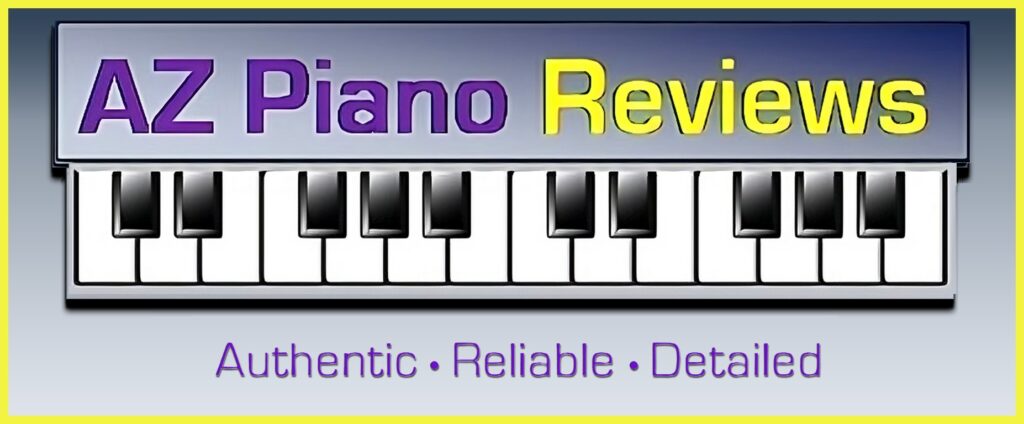













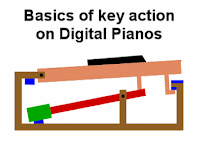

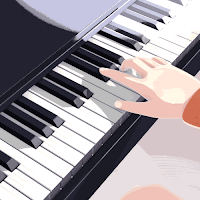
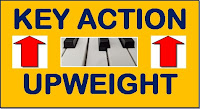

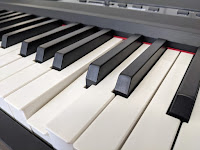



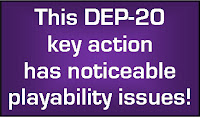


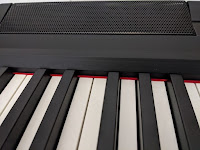


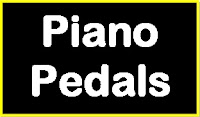






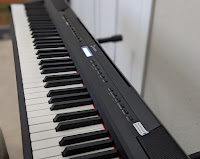












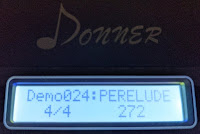


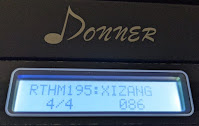
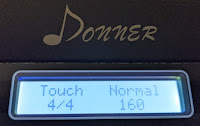















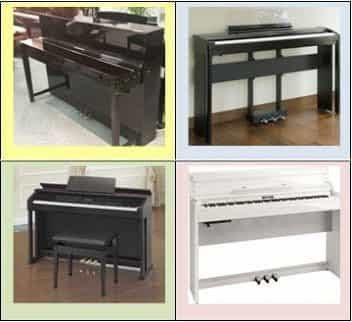


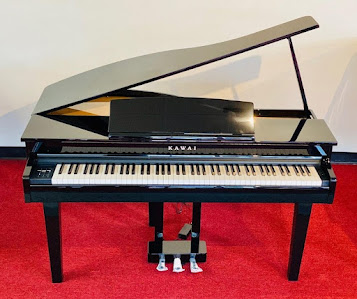
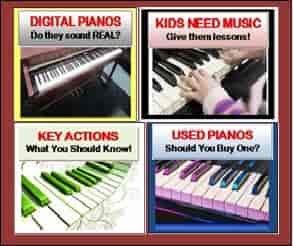
Yours is he first negative review I have seen on this unit. It has lots of bang for the buck. If you were recommending a replacement, with very similar features, what would you recommend? Years ago, I used a Yamaha PF-70 in a band and I loved it. But it was a monster in size and weight, and now my needs are more recreational for myself and 10 year old grandson. The combined features of electronic keyboard and digital piano seem more present on this unit than anything else I have seen-especially in this price range. Thoughts?
If you feel that you can put up with the downsides and issues that I talked about in my review of the Donner DEP-20, then buy it. Otherwise, spend more money and raise your budget and get a digital piano that will not have those issues and that will offer a much more realistic piano playing experience.
If you feel that you can put up with the downsides and issues that I talked about in my review of the Donner DEP-20, then buy it. Otherwise, spend more money and raise your budget and get a digital piano that will not have those issues and that will offer a much more realistic piano playing experience.
Great review. Mine would have been “get fifty more bucks ogether and buy the Yamaha P45”. Yamaha has music knowledgeable people working for them. The Chinese are just manufacturing product and bad product at that made from rather cheapest maypterials and lousy quality control. I don’t trust those pedal to last more than a month. I encourage all fellow musicians to stay as far away from Chinese crap as you can.
Great review,, extensive and very detalled on every aspect of the instrument
The BEST i've read.
Thanks